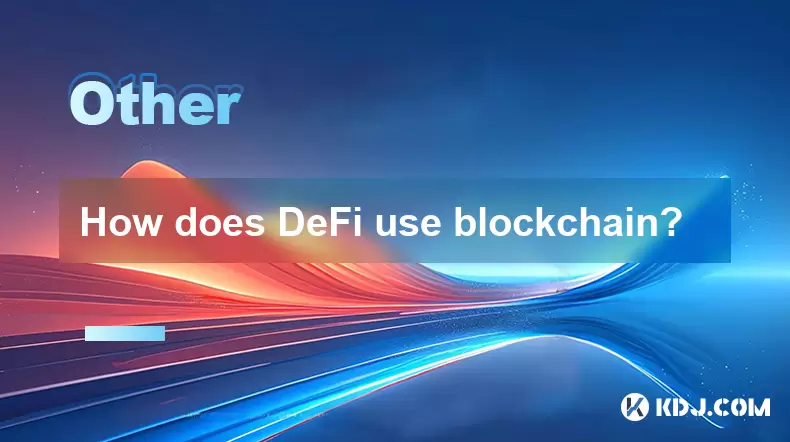-
 Bitcoin
Bitcoin $114400
1.85% -
 Ethereum
Ethereum $3496
2.62% -
 XRP
XRP $2.916
4.75% -
 Tether USDt
Tether USDt $0.9999
0.02% -
 BNB
BNB $751.9
1.74% -
 Solana
Solana $161.2
2.07% -
 USDC
USDC $0.9998
0.00% -
 TRON
TRON $0.3263
1.56% -
 Dogecoin
Dogecoin $0.1987
3.05% -
 Cardano
Cardano $0.7251
4.06% -
 Hyperliquid
Hyperliquid $38.43
4.78% -
 Stellar
Stellar $0.3966
8.00% -
 Sui
Sui $3.431
3.15% -
 Chainlink
Chainlink $16.27
4.03% -
 Bitcoin Cash
Bitcoin Cash $543.3
3.53% -
 Hedera
Hedera $0.2480
8.38% -
 Ethena USDe
Ethena USDe $1.001
0.03% -
 Avalanche
Avalanche $21.38
2.30% -
 Toncoin
Toncoin $3.640
3.41% -
 Litecoin
Litecoin $109.2
3.30% -
 UNUS SED LEO
UNUS SED LEO $8.956
-0.15% -
 Shiba Inu
Shiba Inu $0.00001219
3.22% -
 Polkadot
Polkadot $3.602
3.15% -
 Uniswap
Uniswap $9.153
4.03% -
 Monero
Monero $301.2
3.86% -
 Dai
Dai $0.9999
-0.01% -
 Bitget Token
Bitget Token $4.320
1.80% -
 Pepe
Pepe $0.00001046
4.06% -
 Cronos
Cronos $0.1321
5.83% -
 Aave
Aave $259.0
3.73%
Is blockchain like a public ledger that anyone can read?
Blockchain is a public ledger that anyone can read, ensuring transparency while maintaining privacy through cryptographic means.
Apr 12, 2025 at 03:49 pm

Is blockchain like a public ledger that anyone can read?
Blockchain technology, at its core, is indeed often described as a public ledger that can be read by anyone. This concept is fundamental to understanding how cryptocurrencies like Bitcoin and Ethereum function. In this article, we will delve into the specifics of blockchain as a public ledger, how it works, and the implications of its transparency.
Understanding Blockchain as a Public Ledger
The term public ledger refers to a record-keeping system where transactions are recorded in a way that is accessible to the public. In the context of blockchain, this ledger is maintained across a network of computers, making it decentralized and distributed. Each block in the blockchain contains a list of transactions, and once a block is added to the chain, it cannot be altered, ensuring the integrity of the data.
How Blockchain Ensures Transparency
Transparency is one of the key features of blockchain technology. Every transaction that occurs on the blockchain is recorded on a publicly accessible database. This means that anyone can view the transactions, but the identities of the individuals involved are often protected by cryptographic means. For example, Bitcoin transactions are visible on the Bitcoin blockchain, but the parties involved are identified only by their public addresses, which are pseudonymous.
Accessing the Public Ledger
To access the public ledger of a blockchain, users typically need to use a blockchain explorer. These are online tools that allow users to browse the blockchain and view transaction details. Here is how you can access a blockchain using a blockchain explorer:
- Choose a Blockchain Explorer: Depending on the cryptocurrency you are interested in, you can use different explorers. For Bitcoin, you might use Blockchain.com or BlockCypher. For Ethereum, Etherscan is a popular choice.
- Enter the Transaction Hash or Address: Once on the explorer, you can enter a transaction hash or a public address to view specific details.
- View Transaction Details: The explorer will display the transaction details, including the amount transferred, the timestamp, and the sender and recipient addresses.
Privacy and Anonymity on the Blockchain
While the blockchain is public, privacy and anonymity are still maintained to a certain extent. The use of public and private keys ensures that while transactions are visible, the real-world identities of the parties involved are not directly linked to the transactions. However, advanced techniques like blockchain analytics can sometimes be used to trace transactions back to individuals, especially if they are linked to known addresses.
Security and Immutability of the Public Ledger
The security and immutability of the blockchain are crucial to its function as a public ledger. Once a transaction is recorded on the blockchain, it is extremely difficult to alter. This is achieved through cryptographic hashing and a consensus mechanism like Proof of Work (PoW) or Proof of Stake (PoS). These mechanisms ensure that any attempt to alter a transaction would require an impractical amount of computational power, making the blockchain secure and reliable.
Implications of a Public Ledger in Cryptocurrency
The public nature of the blockchain has significant implications for cryptocurrencies. Transparency ensures that all participants in the network can trust the system, as they can independently verify transactions. This is particularly important for decentralized finance (DeFi) applications, where trustless systems are paramount. Additionally, the public ledger can be used for auditing and compliance, as regulators and auditors can access the blockchain to verify transactions and ensure adherence to regulations.
Use Cases Beyond Cryptocurrencies
While the public ledger aspect of blockchain is most commonly associated with cryptocurrencies, it has broader applications. For instance, supply chain management can benefit from the transparency of blockchain, allowing all parties to track the movement of goods. Similarly, voting systems can leverage the immutability of blockchain to ensure the integrity of election results.
Frequently Asked Questions
Q: Can I access the blockchain without any special software?
A: Yes, you can access the blockchain using a blockchain explorer, which is a web-based tool that does not require any special software. Simply visit the website of a blockchain explorer and enter the transaction hash or address you want to view.
Q: Is it possible to completely hide my transactions on the blockchain?
A: While the blockchain is public, some cryptocurrencies like Monero and Zcash offer enhanced privacy features that can hide transaction details. However, these features are specific to those cryptocurrencies and not available on all blockchains.
Q: How does the public nature of the blockchain affect its scalability?
A: The public nature of the blockchain can impact its scalability, as every node on the network needs to process and store every transaction. This can lead to slower transaction times and higher costs. Solutions like sharding and layer-2 scaling are being developed to address these issues.
Q: Are there any risks associated with the public ledger of the blockchain?
A: Yes, while the public ledger ensures transparency, it also poses risks such as privacy concerns and the potential for transaction data to be analyzed and linked to real-world identities. Users must be aware of these risks and take steps to protect their privacy, such as using different addresses for different transactions.
Disclaimer:info@kdj.com
The information provided is not trading advice. kdj.com does not assume any responsibility for any investments made based on the information provided in this article. Cryptocurrencies are highly volatile and it is highly recommended that you invest with caution after thorough research!
If you believe that the content used on this website infringes your copyright, please contact us immediately (info@kdj.com) and we will delete it promptly.
- Bitcoin Price Wobbles: Options Analysis Points to Bullish Undercurrent Despite Dip
- 2025-08-04 04:30:12
- Ark Invest, Coinbase, and Bitcoin: Decoding the Crypto Investment Landscape in NYC
- 2025-08-04 04:30:12
- LILPEPE, Cardano, and Shiba Inu: The 2025 Crypto Landscape
- 2025-08-04 04:50:12
- Cold Wallet, Token Rewards, and Crypto Usage: A New Era?
- 2025-08-04 04:50:12
- Navigating the Wild West: Token Unlocks and Altcoin Surges - A Trader's Guide
- 2025-08-04 02:30:11
- AI, Crypto, and the Frontier: Riding the Wave of Innovation
- 2025-08-04 03:50:11
Related knowledge

What is the difference between on-chain and off-chain transactions?
Aug 02,2025 at 04:22pm
Understanding On-Chain TransactionsOn-chain transactions refer to digital asset transfers that are recorded directly on a blockchain ledger. These tra...

What is a node's role in a blockchain network?
Aug 03,2025 at 03:16pm
Understanding the Function of a Node in a Blockchain NetworkA node is a fundamental component of any blockchain network, acting as a participant that ...

How are transactions verified on a blockchain?
Aug 04,2025 at 12:35am
Understanding the Role of Nodes in Transaction VerificationIn a blockchain network, nodes are fundamental components responsible for maintaining the i...

What is the double-spending problem and how does blockchain prevent it?
Aug 02,2025 at 01:07pm
Understanding the Double-Spending ProblemThe double-spending problem is a fundamental challenge in digital currency systems where the same digital tok...

What is the difference between a blockchain and a database?
Aug 01,2025 at 09:36pm
Understanding the Core Structure of a BlockchainA blockchain is a decentralized digital ledger that records data in a series of immutable blocks linke...

How does DeFi use blockchain?
Aug 03,2025 at 11:15pm
Understanding the Role of Blockchain in DeFiDecentralized Finance (DeFi) relies fundamentally on blockchain technology to operate without intermediari...

What is the difference between on-chain and off-chain transactions?
Aug 02,2025 at 04:22pm
Understanding On-Chain TransactionsOn-chain transactions refer to digital asset transfers that are recorded directly on a blockchain ledger. These tra...

What is a node's role in a blockchain network?
Aug 03,2025 at 03:16pm
Understanding the Function of a Node in a Blockchain NetworkA node is a fundamental component of any blockchain network, acting as a participant that ...

How are transactions verified on a blockchain?
Aug 04,2025 at 12:35am
Understanding the Role of Nodes in Transaction VerificationIn a blockchain network, nodes are fundamental components responsible for maintaining the i...

What is the double-spending problem and how does blockchain prevent it?
Aug 02,2025 at 01:07pm
Understanding the Double-Spending ProblemThe double-spending problem is a fundamental challenge in digital currency systems where the same digital tok...

What is the difference between a blockchain and a database?
Aug 01,2025 at 09:36pm
Understanding the Core Structure of a BlockchainA blockchain is a decentralized digital ledger that records data in a series of immutable blocks linke...

How does DeFi use blockchain?
Aug 03,2025 at 11:15pm
Understanding the Role of Blockchain in DeFiDecentralized Finance (DeFi) relies fundamentally on blockchain technology to operate without intermediari...
See all articles

























































































